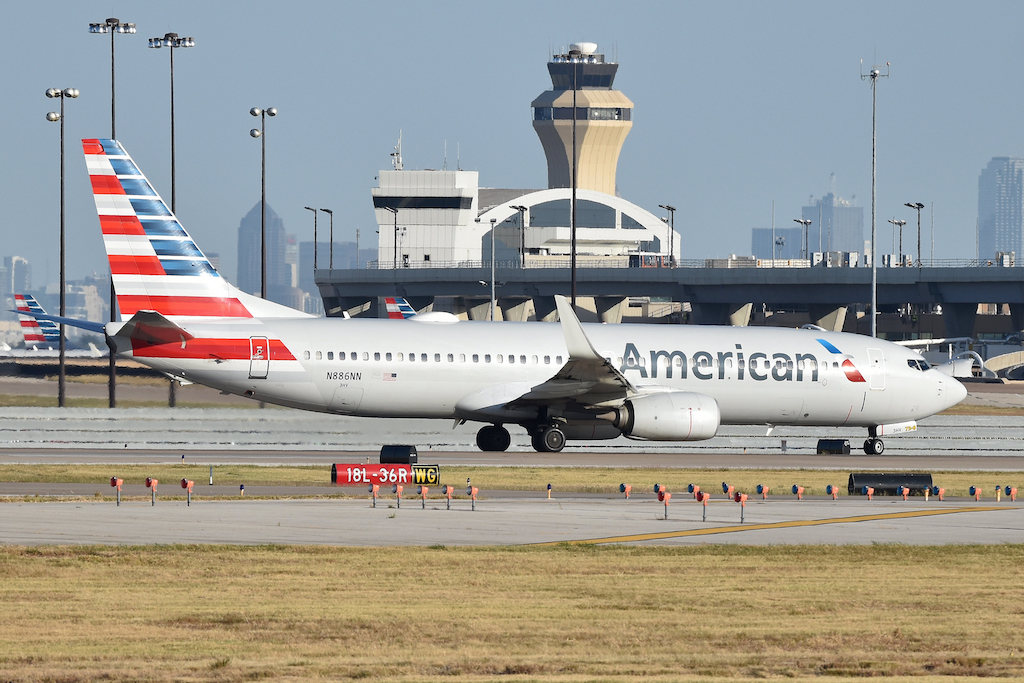American Adds to Summer Route Frenzy Amid Concerns of Overcapacity

Photo Credit: American Airlines plans to fly 90% of 2019 domestic seats this summer. Flickr / Alan Wilson/HawkeyeUK
U.S. airlines are scrambling to add leisure routes for this summer, as eager would-be travelers book flights amid the country's rapidly advancing vaccination program.
American Airlines is adding to the frenzy with 10 more new routes — or more than 150 total including prior announcements by its own math — focused on leisure flyers. The additions follow similar moves by Delta Air Lines, Southwest Airlines, and United Airlines, as well as a flurry of additions at budget carriers like Frontier Airlines.
"The rate of vaccinations in the U.S. really took off in the last weeks and months, and people are looking to get out and do the things they did before the crisis — one of those top things is travel," American's Vice President of Network Planning Brian Znotins told Airline Weekly. "That gives us confidence we're on our way out of this crisis. It doesn't mean we are out of it, but we're certainly on our way out of it."
More than 122 million Americans, or nearly 37 percent of the population, had received at least one dose of a Covid-19 vaccine by Tuesday, according to the U.S. Centers for Disease Control and Prevention. The rising vaccination rate prompted officials to say travel presented a "low risk" for those who are fully inoculated, though they stopped short of endorsing travel, earlier in April.
American's latest route additions include eight new Saturday-only nonstops to Orlando, plus one between Austin and Nassau from June 5; and daily service between Nashville and Raleigh-Durham from June 2. These follow the addition of 10 new routes from Austin, and 15 routes from Boston and New York as part of the carrier's controversial new alliance with JetBlue Airways.
All in, American will fly 90 percent of its 2019 domestic seats and 80 percent of its international seats this summer. This follows news that the carrier will return "most" of its 855 mainline aircraft to service by the end of June.
The confidence in summer travel comes as U.S. airlines report strong March bookings. On Wednesday, Alaska Airlines said it saw a "step change improvement" in demand during the month that helped it generate positive operating cash flow for the first time since the crisis began. Both American and United have said net bookings are near 2019 levels. And, on April 9, discounter Allegiant Air said that reservations had exceeded the level of two years ago during the month.
But the recovery remains dominated by holidaygoers and not more lucrative corporate customers. This leisure traveler dominance, plus few international visitors, means the industry still has a ways to go to recover financially.
"An airline is a funny organism that getting back to profitability will be a longer road than getting back to the place where it’s better to fly all our airplanes than park them," said Znotins.
Business travel has "yet to return," he said. As a result, business-focused hubs, like New York and Washington, D.C., recover less quickly than ones that cater more to holidaygoers, like Miami and Phoenix, this summer.
On Tuesday, American disclosed that revenues are forecast to decrease 62 percent compared to 2019 in the first quarter. Closing that gap — and returning to profitability — will require both business and international travel to return.
Internationally, American's decision to fly 80 percent of 2019 seats does not mean it will resume its pre-pandemic long-haul network. Much of this seat capacity recovery will come from flying widebody jets — rather than the narrowbodies — on select routes to the Caribbean, Mexico, and near South America.
Flights to countries where international travel is still restricted, for example Australia, will remain significantly reduced or suspended, said Znotins. American's flights to Edinburgh, Hong Kong and Shannon will not operate this summer, a move that follows the decision last July to exit seven long-haul international destinations.
While all of the schedule additions at U.S. carriers bodes well for the travel recovery, Wall Street analysts are raising some red flags. There are concerns that overcapacity to popular leisure destinations could depress yields in off-peak periods this summer, wrote Raymond James analyst Savanthi Syth in a report on Sunday.
But, with labor expenses mostly covered by federal payroll support through September 30, the operating cost of flying low-yield travelers on leisure routes is low, said Znotins.
